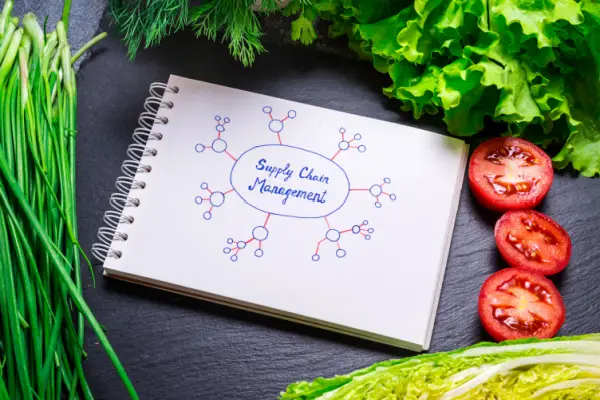There are several best practices for restaurant food supply chain management. Efficient, forward-looking supply chain management is one of the most essential factors for restaurant success. Of course, restaurant businesses need to manage a range of different challenges and obstacles to get their food into the hands of customers. This is especially true with recent food supply shortages spurred by COVID-19 and worldwide economic fluctuations. As a restaurant owner yourself, you should know how to prepare your business for whatever hurdles lie ahead. Read on for the best practices to restaurant food supply chain management.
Establish Strong Vendors And Suppliers Relationships
Establishing strong relationships is one of the best practices for restaurant food supply chain management. Build professional relationships built upon trust, transparency, honesty, and commitment. Infuse these skills and qualities into every aspect of vendor or supplier communications. Oftentimes, this results in better deals, superior treatment, and far more flexibility. You should also ensure that every bill and invoice is paid on time. Don’t make sales representatives have to chase you down every month. Plus, be clear when communicating your requirements, schedules, deadlines, and needs. Surely, establish strong vendors and suppliers relationships to improve restaurant food supply chain management.
Proactively Plan For Shortages And Delays
Of course, proactively planning for shortages and delays can help you optimize restaurant food supply chain management with the best practices. You can always face unexpected risks from weather events, political disruptions, labor shortages, or technology revolutions. Plan ahead and remain proactive to keep your business safe from these issues. To protect your restaurant supply and food-driven operations, partner with resilient suppliers, establish an incident contingency plan, and regularly consult with vendors. Plus, take advantage of innovative technologies — such as RFID tags and POS software. These solutions keep you involved and updated with every aspect of your restaurant business. Surely, proactively plan for delays or shortages to embrace the latest restaurant food supply chain management.
Re-Analyze Vendor Rates, Quality, And Value
Another food supply chain best practice, take a look at current vendor rates, perceived quality, and overall value. Every year, sit down and consider what your top vendors bring to the table. Price is a major indicator of overall value. However, you should also factor items like on-time delivery rate, product quality, and total inventory. Then, think about how vendors cater to your unique needs. This will be a major turnabout in financing and management. Ultimately, you want to partner with people that care about you, and are committed to improving your restaurant. Annual re-evaluation can help you uncover potential gaps in your current contractual agreement. If needed, it may also provide a sign to begin searching for new alternatives. Definitely, re-analyze rates, quality, and value from vendors to improve food supply chain management this year.
Track Supply Back To The Source
To embrace the best restaurant food supply chain management best practices, start tracking ingredients and products back to the source. Track supply origin to upgrade SCM and guarantee food safety. Carefully read and subscribe to local agricultural reports or have a local search marketing in your area — especially in regions where you source key ingredients. This way, you can best prepare for unexpected outbreaks, supply chain shortages, and product volatility. With these insights, you can proactively adjust your menu and notify customers of limited quantity of certain items. Absolutely, track source to embrace leading restaurant food supply chain management practices.
Implement Powerful Restaurant Software
Many restaurant food supply chain best practices are focused on embracing the latest software, systems, and tech. Inventory management applications give restaurant owner’s a comprehensive, birds eye view of the end-to-end supply chain. These innovative systems help with monitoring customer transactions, ingredient supply levels, and restaurant supplies. Implement inventory management tools to lower costs and improve supply predictability. With this saved energy, you can focus on more important aspects of your restaurant operation. Indeed, implement powerful software solutions to upgrade your restaurant food supply chain this year.
There are several best practices for restaurant food supply chain management. For a start, establish, build, and nurture professional relationships with vendors. Next, proactively plan for potential shortages or delays in your supply chain infrastructure. Every year, sit down to review and re-evaluate existing contractual agreements with key suppliers. To further improve safety and predictability, start tracing your most important ingredients back to the source. Plus, you should implement powerful restaurant software to accelerate, automate, and fortify your operations. Follow the points above to learn about the best practices for restaurant food supply chain management.
 Business First Family Business, Accounting, Finance, Investing, Marketing And Management
Business First Family Business, Accounting, Finance, Investing, Marketing And Management
